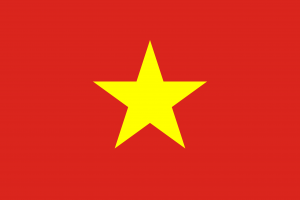Language/Vietnamese/Culture/Traditional-Music
 Հայերէն
Հայերէն Български език
Български език 官话
官话 官話
官話 Hrvatski jezik
Hrvatski jezik Český jazyk
Český jazyk Nederlands
Nederlands English
English Suomen kieli
Suomen kieli Français
Français Deutsch
Deutsch עברית
עברית हिन्दी
हिन्दी Magyar
Magyar Bahasa Indonesia
Bahasa Indonesia فارسی
فارسی Italiano
Italiano 日本語
日本語 Қазақ тілі
Қазақ тілі 한국어
한국어 Lietuvių kalba
Lietuvių kalba Νέα Ελληνικά
Νέα Ελληνικά Şimali Azərbaycanlılar
Şimali Azərbaycanlılar Język polski
Język polski Português
Português Limba Română
Limba Română Русский язык
Русский язык Српски
Српски Español
Español العربية القياسية
العربية القياسية Svenska
Svenska Wikang Tagalog
Wikang Tagalog தமிழ்
தமிழ் ภาษาไทย
ภาษาไทย Türkçe
Türkçe Українська мова
Українська мова Urdu
Urdu
| ◀️ Food Ordering — Previous Lesson | Next Lesson — Movie and Television ▶️ |
Introduction[edit | edit source]
Welcome to the lesson on traditional Vietnamese music! In this lesson, we will explore the rich cultural heritage of Vietnam through its traditional music and instruments. Music has always played a significant role in Vietnamese culture, serving as a means of communication, entertainment, and storytelling. By understanding traditional Vietnamese music, you will gain a deeper appreciation for the country's history and artistic traditions.
Traditional Vietnamese Music[edit | edit source]
Origins and Influences[edit | edit source]
Traditional Vietnamese music has its roots in the indigenous culture of Vietnam, but it has also been influenced by neighboring countries such as China and Cambodia. The music reflects the country's diverse ethnic groups and their unique musical traditions. Vietnamese music is known for its melodic and rhythmic complexity, as well as its poetic lyrics that often convey deep emotions and philosophical ideas.
Instruments[edit | edit source]
Traditional Vietnamese music is performed using a wide range of instruments, each with its own distinct sound and role in the ensemble. Here are some of the most commonly used instruments in traditional Vietnamese music:
| Vietnamese | Pronunciation | English Translation |
|---|---|---|
| Đàn Tranh | /ɗǎn traɲ/ | 16-string zither |
| Đàn Bầu | /ɗǎn bəw/ | Monochord |
| Đàn Nguyệt | /ɗǎn ŋwêˀt/ | Moon-shaped lute |
| Đàn Kim | /ɗǎn kim/ | Vertical two-string fiddle |
| Đàn Nhi | /ɗǎn ɲi/ | Two-string fiddle |
| Sáo Trúc | /sǎw troo/ | Bamboo flute |
| Trống | /troŋ/ | Drum |
| Kèn | /kên/ | Horn |
These instruments are often played together in an ensemble, creating a harmonious blend of sounds that is characteristic of Vietnamese music.
Musical Styles[edit | edit source]
Traditional Vietnamese music can be categorized into several styles, each with its own unique characteristics and regional variations. Some of the most well-known styles include:
- Nhạc Cung Đình: This style originated in the royal courts of Vietnam and is characterized by its refined and elegant melodies. It was often performed during important ceremonies and events.
- Nhạc Dân Tộc Cải Biên: This style involves the adaptation and arrangement of traditional folk songs and melodies, often incorporating modern instruments and techniques.
- Nhạc Quan Họ: Quan Họ is a popular folk music style from the Bac Ninh province, characterized by its call-and-response singing between male and female singers.
- Nhạc Dân Ca: This style encompasses a wide range of folk songs from different regions of Vietnam, reflecting the diversity of the country's musical traditions.
Cultural Significance[edit | edit source]
Traditional Vietnamese music holds great cultural significance in the country. It is often associated with important events and festivals, such as weddings, funerals, and lunar New Year celebrations. Music is also an integral part of Vietnamese opera and theater, adding depth and emotion to the performances.
Furthermore, traditional Vietnamese music plays a vital role in preserving the cultural heritage of the country. Through music, stories and legends are passed down from generation to generation, keeping the traditions alive and connecting people to their roots.
Notable Artists[edit | edit source]
Over the years, Vietnam has produced many talented musicians who have made significant contributions to traditional Vietnamese music. Here are a few notable artists:
- Hồ Quảng: Known as the "King of Quan Họ," Hồ Quảng was a renowned singer and composer who played a crucial role in popularizing Quan Họ music.
- Văn Cao: Văn Cao was a composer and songwriter who is best known for his iconic song "Tiến Quân Ca" (Marching Song), which became the national anthem of Vietnam.
- Trọng Đài: Trọng Đài is a master of the Đàn Tranh, a 16-string zither. He has dedicated his life to preserving and promoting traditional Vietnamese music.
- Thu Hà: Thu Hà is a talented singer who is known for her soulful performances of traditional Vietnamese songs. She has won numerous awards for her contributions to the music industry.
These artists have left a lasting impact on traditional Vietnamese music and continue to inspire new generations of musicians.
Conclusion[edit | edit source]
Traditional Vietnamese music is a treasure trove of cultural heritage and artistic expression. Through its beautiful melodies and poetic lyrics, it offers a glimpse into the soul of Vietnam. By exploring traditional Vietnamese music and instruments, you have taken an important step in understanding the country's rich history and cultural traditions.
We hope you enjoyed this lesson on traditional Vietnamese music. In the next lesson, we will delve into the world of Vietnamese movies and television shows. Stay tuned!
Videos[edit | edit source]
Traditional Vietnamese Music - Ha Long Bay - YouTube[edit | edit source]
Vietnamese Traditional Music 1 - YouTube[edit | edit source]
Traditional Vietnamese Music - YouTube[edit | edit source]
Sources[edit | edit source]
Other Lessons[edit | edit source]
- Vietnamese Values
- Movie and Television
- Cuisine and Dining
- Names
- Bánh chưng ngày
- Ao Dai
- Mid Autumn Festival
- Social Etiquette
- Bánh chưng ngày
| ◀️ Food Ordering — Previous Lesson | Next Lesson — Movie and Television ▶️ |

